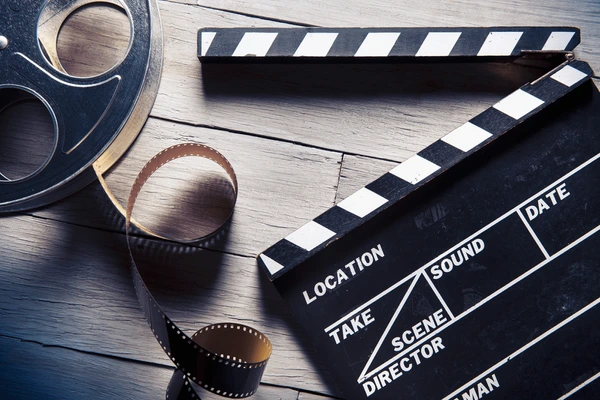Capturing Magic: The Evolution of Cinematography in American Films

Cinematography, the art and science of capturing moving images on film or digital media, is often hailed as the soul of cinema. It shapes the visual language of a film, conveying emotions, setting the mood, and guiding the audience’s attention. In the realm of American filmmaking, the evolution of cinematography has been a fascinating journey, marked by innovation, experimentation, and groundbreaking techniques that have redefined storytelling on the silver screen. From the silent shadows of the early 20th century to the digital dreams of the present day, let’s embark on a journey through the evolution of cinematography in US films.
The Silent Era: Birth of Visual Storytelling
The birth of American cinema coincided with the silent era, a time when filmmakers relied solely on visual storytelling techniques to convey narrative and emotion. Pioneers like D.W. Griffith and Charlie Chaplin embraced the challenges of silent filmmaking, experimenting with camera angles, lighting, and editing to captivate audiences. Griffith’s epic “The Birth of a Nation” (1915) showcased the power of cinematic storytelling, with its sweeping landscapes and dramatic compositions. Meanwhile, Chaplin’s iconic silent comedies, such as “The Kid” (1921) and “City Lights” (1931), demonstrated the artistry of physical performance and visual humor.
One of the most significant advancements of the silent era was the development of the continuity system, a set of filmmaking techniques that established a logical flow of action and emotion within a scene. Filmmakers like Griffith and Sergei Eisenstein pioneered the use of techniques such as cross-cutting and parallel editing to create suspense and build tension. These innovations laid the groundwork for the language of cinema that would be refined and expanded upon in the decades to come.
Golden Age Glamour: Technicolor and Cinematic Spectacle
The advent of sound in the late 1920s ushered in a new era of filmmaking, marked by lavish productions and colorful spectacle. Hollywood studios embraced the possibilities of Technicolor, a revolutionary color film process that brought a new level of vibrancy and realism to the screen. Films like “The Wizard of Oz” (1939) and “Gone with the Wind” (1939) showcased the breathtaking beauty of Technicolor, with their lush landscapes and dazzling costumes.
Cinematographers like Gregg Toland pushed the boundaries of traditional filmmaking techniques, experimenting with deep focus and innovative camera movements to create visually stunning compositions. Toland’s work on “Citizen Kane” (1941), often hailed as one of the greatest films ever made, revolutionized cinematography with its bold use of lighting and perspective. Meanwhile, directors like Alfred Hitchcock embraced the use of suspenseful lighting and dynamic camera angles to heighten tension and drama in films like “Psycho” (1960) and “Vertigo” (1958).
New Hollywood and the Auteur Movement: Breaking the Rules
In the 1960s and 1970s, the rise of New Hollywood ushered in a new era of filmmaking characterized by bold experimentation and artistic freedom. Directors like Stanley Kubrick, Martin Scorsese, and Francis Ford Coppola challenged the conventions of traditional storytelling, pushing the boundaries of cinematography to create immersive cinematic experiences.
Films like “2001: A Space Odyssey” (1968) and “Taxi Driver” (1976) showcased the use of innovative techniques such as Steadicam shots and unconventional framing to immerse audiences in their respective worlds. Meanwhile, cinematographers like Gordon Willis, known as the “Prince of Darkness,” embraced low-key lighting and shadowy compositions to evoke a sense of gritty realism in films like “The Godfather” trilogy (1972-1990).
Digital Revolution: The Dawn of a New Era
The advent of digital technology in the late 20th century revolutionized the filmmaking process, offering cinematographers new tools and techniques to explore creative expression. Directors like Steven Spielberg and James Cameron embraced the possibilities of computer-generated imagery (CGI) to create visually spectacular worlds in films like “Jurassic Park” (1993) and “Avatar” (2009).
Meanwhile, auteurs like Quentin Tarantino and Christopher Nolan continued to push the boundaries of traditional filmmaking, experimenting with nonlinear storytelling and unconventional camera techniques to create bold, immersive cinematic experiences. The rise of digital cameras and editing software democratized the filmmaking process, allowing independent filmmakers to create visually stunning films on smaller budgets.
Looking Ahead: The Future of Cinematography
As we look to the future, the evolution of cinematography in American films shows no signs of slowing down. Advances in technology, including virtual reality (VR) and augmented reality (AR), offer new opportunities for filmmakers to explore immersive storytelling techniques and push the boundaries of visual creativity.
Moreover, the growing influence of streaming platforms and digital distribution channels has opened up new avenues for diverse voices and perspectives to be heard in the world of cinema. As filmmakers continue to push the boundaries of storytelling and visual expression, one thing is certain: the evolution of cinematography in American films will continue to captivate and inspire audiences for generations to come.
Conclusion: The Artistry of Cinematic Vision
In conclusion, the evolution of cinematography in American films is a testament to the power of visual storytelling and the enduring legacy of cinematic artistry. From the silent shadows of the early 20th century to the digital dreams of the present day, cinematographers have continued to push the boundaries of creativity and innovation, shaping the way we experience cinema and inspiring generations of filmmakers to come. As we celebrate the rich history and vibrant future of cinematography in American films, let us remember the magic of the silver screen and the countless stories yet to be told.

You must be logged in to post a comment Login